Click the blue text above to follow us
Exploring Meridians
In the Huangdi Neijing, it is stated: “All acupuncture principles begin with the meridians, nourishing their pathways, regulating their measurements, connecting to the five internal organs, and differentiating the six external organs; I wish to fully understand their principles.” The Yellow Emperor said that a person is born, first forming essence, from which the brain marrow is produced, bones become the framework, vessels are the nourishment, tendons are the rigidity, flesh forms the walls, skin is firm and hair grows long, grains enter the stomach, and the vessels circulate, allowing blood and qi to flow. Lei Gong expressed a desire to understand the origin of the meridians. The Yellow Emperor stated that the meridians are what can determine life and death, address hundreds of illnesses, and regulate deficiency and excess; they must not be obstructed.
From the Huangdi Neijing, we can see that when the meridians are open, hundreds of diseases dissipate; when the meridians are obstructed, hundreds of diseases arise. Traditional Chinese Medicine has long emphasized: pain indicates obstruction, and obstruction leads to pain. So what diseases can arise from obstructed meridians? When we experience discomfort, which meridian should we clear? We will answer these one by one:
For colds and coughs, tap the Lung Meridian
The Hand Taiyin Lung Meridian treats diseases such as: cough, cold, asthma, bronchitis, tonsillitis, nosebleeds, joint disorders in the meridian’s pathway, muscle pain, etc. When these symptoms occur, tapping the Lung Meridian on both hands can help regulate.

For facial ailments, focus on the Large Intestine Meridian
The Hand Yangming Large Intestine Meridian treats: ailments of the head and face, throat diseases, febrile diseases, skin diseases, gastrointestinal issues (bloating, abdominal pain, constipation, diarrhea), mental disorders, and other conditions along the meridian’s pathway. Regularly tapping the Large Intestine Meridian can help develop a good habit of regular bowel movements.
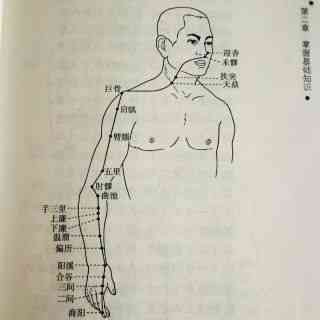
For indigestion, tap the Stomach Meridian
The Foot Yangming Stomach Meridian corresponds to symptoms such as: sore throat, stomach pain, indigestion, heat intolerance; dry lips, thin body, fatigue. Constipation, knee joint soreness; therefore, during free time, we can frequently tap the Stomach Meridian on the legs to aid digestion.
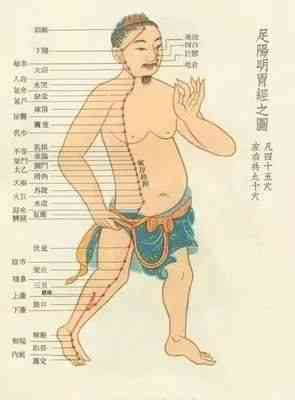
For fatigue, nourish the Spleen Meridian
When the Spleen Meridian is obstructed, it typically manifests as disharmony of the spleen and stomach, loss of appetite, fatigue, etc. The Spleen Meridian treats stomach diseases, gynecological issues, and other conditions along the meridian’s pathway. If you find a painful point while massaging the Spleen Meridian on the calf, be sure to rub the Spleen Meridian on the calf, focusing on the four acupoints: Yinlingquan (Yin Mound Spring), Dijian (Earth Machine), Lougu (Leak Valley), and Sanyinjiao (Three Yin Intersection).
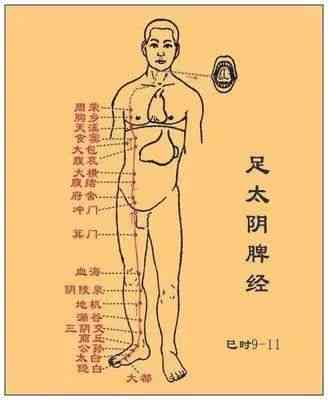
For anxiety and palpitations, tap the Heart Meridian
The Hand Shaoyin Heart Meridian treats: cardiovascular diseases, coronary heart disease, insomnia, forgetfulness, neurasthenia, and muscle pain along the meridian’s pathway. Deficiency symptoms include: chest tightness, facial redness, heaviness in the limbs, easy fatigue, poor blood and qi circulation, chest pain, and palpitations; excess symptoms include: difficulty breathing, headaches due to poor blood circulation, dry mouth, and bitter taste.
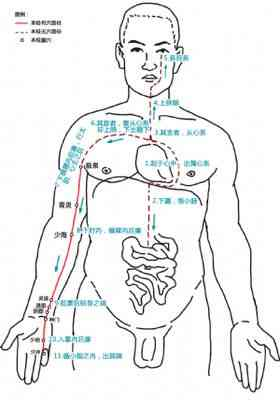
For poor absorption, consult the Small Intestine Meridian
The Small Intestine Meridian is most active from 1:00 PM to 3:00 PM: this is the time when the Small Intestine Meridian performs its function of clearing and absorbing, allowing nutrients to enter the body and waste to be sent to the Large Intestine for digestion and elimination; after this time, the digestive system begins to rest, and it is advisable to consume less protein, fat, and starch-rich foods at dinner to avoid accumulation in the body, which is also the reason for eating less at dinner.
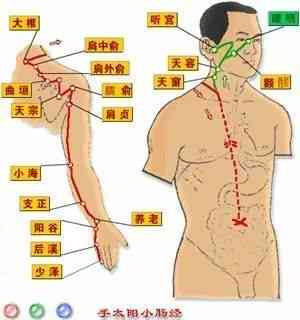
For neck, shoulder, and back pain, rely on the Bladder Meridian
The Bladder Meridian treats: external symptoms such as headaches, neck pain, eye pain with excessive tearing, nasal congestion, runny nose, nosebleeds, hemorrhoids, and pain in the back, waist, sacrum, thighs, popliteal fossa, and gastrocnemius muscle along the meridian’s pathway. Internal symptoms include: mania, frequent urination, short and red urine, and incontinence.
The Bladder is the organ of the kidneys, both belong to water; therefore, it is important to drink plenty of water to help the bladder eliminate waste from the body and promote the metabolism of the urinary system.
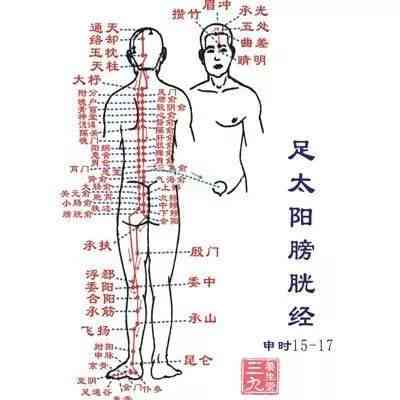
For low energy, nourish the Kidney Meridian
The Foot Shaoyin Kidney Meridian is paired with the Foot Taiyang Bladder Meridian. It treats urinary and reproductive system disorders, neurological and mental disorders, certain respiratory, digestive, and circulatory system diseases, as well as conditions along the meridian’s pathway. If a child is unwell, parents can gently press along the sides of the spine from the cervical to lumbar vertebrae between the ages of three to five, which can help guide excess heat downwards. Insufficient kidney yang can exacerbate edema. A strong kidney is essential for longevity.
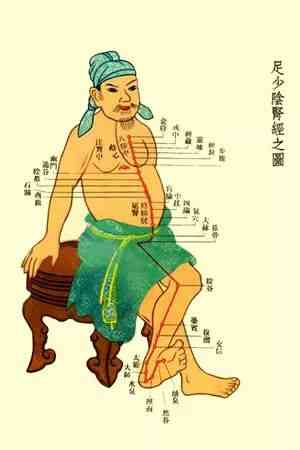
For insomnia and vivid dreams, regulate the Pericardium Meridian
The Pericardium Meridian is most active from 7:00 PM to 9:00 PM. The Pericardium Meridian governs blood and regulates, so if dinner is too rich, it can lead to excessive heat, causing chest discomfort and nausea. Therefore, it is advisable not to eat overly rich foods at dinner, and to rest and exercise, preferably by walking, after the meal.
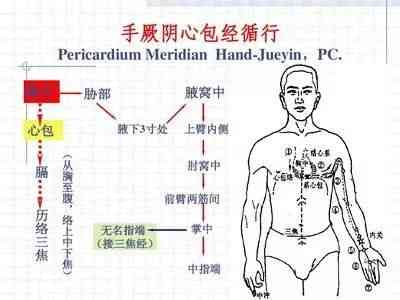
For complex and difficult diseases, regulate the Sanjiao Meridian
The Sanjiao Meridian can be frequently tapped. Traditional Chinese Medicine emphasizes appropriate techniques, believing that the Sanjiao Meridian is the commander of human health, thus maintaining its smooth flow is of great importance. As the saying goes: “Tapping the Sanjiao Meridian, qi flows and hundreds of diseases dissipate.” In daily life, regularly tapping the Sanjiao Meridian can keep the meridians of the five internal organs unobstructed, allowing qi to circulate smoothly; therefore, the best method is tapping. The best time to tap the Sanjiao Meridian is just before bed, as the qi and blood are most abundant during the Hai hour, which is between 9:00 PM and 10:00 PM.

For nodules and tumors, stimulate the Gallbladder Meridian
Tapping the Gallbladder Meridian primarily stimulates the gallbladder, forcing bile secretion, enhancing the body’s absorption capacity, and providing sufficient materials needed for the hematopoietic system. Additionally, it can accelerate the activity of the Gallbladder Meridian, expelling waste accumulated along the outer thigh, thus directly reducing fat in the buttocks and outer thighs, aiding in weight loss.
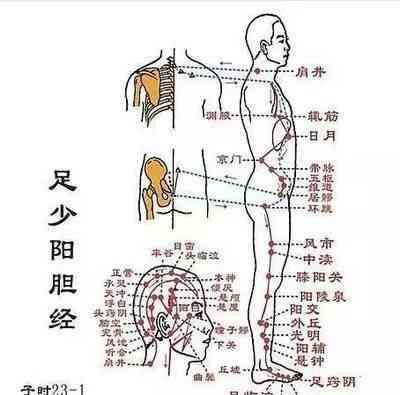
For emotional distress and depression, soothe the Liver Meridian
In Traditional Chinese Medicine, the five elements state that “anger harms the liver.” Modern individuals face pressure from various aspects, often feeling depressed, which can obstruct liver qi, leading to stagnant blood and qi. Over time, this generates internal heat, exacerbating anxiety. Pressing the four acupoints of the Liver Meridian (Yuan point Taichong, Ying point Xingjian, Luo point Ligou, He point Ququan) has a good effect on clearing liver fire and soothing liver qi. Directly connecting to the original qi of the Liver Meridian, it is best to persistently press for about 2 minutes around 5 PM every day, especially in the spring, when the effect of soothing liver qi is optimal.
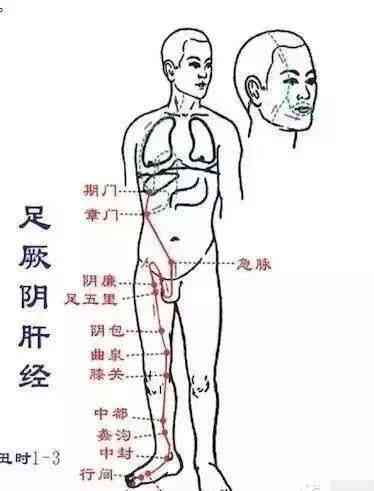
For weakness and excessive sweating, moxibustion on the Ren Meridian
The Ren Meridian runs through the body and connects with the five internal organs, circulating throughout. If the Ren Meridian is obstructed, it can lead to decreased function of the internal organs. The character “Ren” implies responsibility and nurturing, meaning it governs the womb. If the qi of the Ren Meridian is disordered, it can affect fertility and lead to various conditions such as leukorrhea, menstrual irregularities, urinary difficulties, and pain in the genital area.
Common issues along the meridian include: perineal pain, genital pain, lower abdominal pain, navel pain, middle abdominal pain, chest pain, pharyngitis, throat pain, and chin pain.
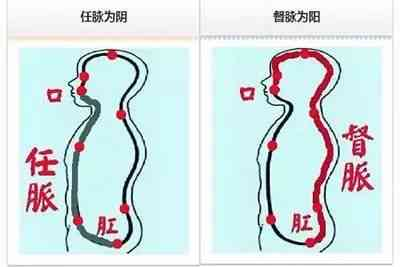
For deficiency sweating and cold intolerance, tap the Du Meridian
The Du Meridian reflects the functions of the brain marrow and kidneys. The Du Meridian runs along the spine, connecting to the brain and kidneys, closely related to their physiological functions and pathological changes. The kidneys are the foundation of congenital essence, governing marrow and brain, thus conditions such as strong spine, cold limbs, and infertility are related to the Du Meridian.
Common issues along the pathway include: perineal pain, hemorrhoids, coccyx pain, lumbar pain, back pain, neck pain, occipital pain, vertex pain, and frontal pain.

Simple, practical, and warm; long press the QR code to follow!
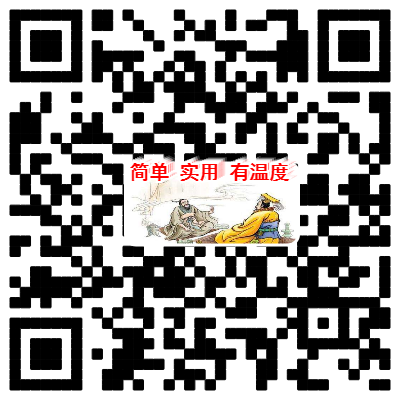
Online compilation, not easy work
Follow and view for encouragement
Spread health, full of fragrance
Share and pass on, hands have lingering fragrance
Practical Guide to the Huangdi Neijing (hdnjsydq)
If you like this article, please give me a thumbs up.

